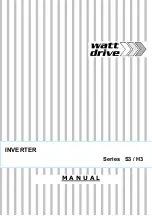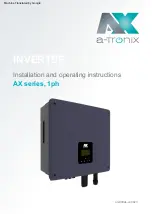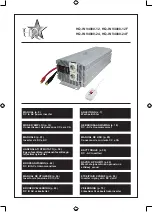
Installing the Bridging Converter
22
4.
If you are installing the bridging converter in an AT-MCR12 chassis, refer
to the
AT-MCR12 Chassis Installation Guide
from our web site for
instructions on how to install the bridging converter in the chassis, then
proceed to
Step 7.
Note
A 12-50VDC bridging converter cannot be installed in an AT-MCR12
chassis.
5.
Place the bridging converter on a secure, level surface, leaving ample
space around the bridging converter for ventilation.
6.
Apply power to the bridging converter.
Note
This step does not apply if you are mounting a 12VDC-version bridging
converter in an AT-MCR12 chassis.
For instructions on how to apply power to a 12VDC version AT-FS232 or
AT-FS232/x Series Bridging Converter, refer to “Connecting a 12VDC
Powered Unit” on page 24.
For instructions on how to apply power to a 12-50VDC version AT-FS232
or AT-FS232/x Series Bridging Converter, refer to “Wiring and
Connecting a 12-50VDC Powered Unit” on page 25.
7.
Remove the dust cover from the fiber optic port and connect the fiber optic
cable to the 100Base-FX port.
When attaching a fiber optic cable, be sure to observe the following
guidelines:
❑
Be sure that the cable connector is firmly locked into place in the port.
❑
You should verify that you are using the appropriate type of fiber optic
cabling. Refer to Table 4 on page 17 for fiber optic cabling
specifications.
❑
You should verify that the operating specifications of the converter’s
fiber optic port are compatible with the fiber optic port on the remote
end-node. For example, you cannot connect a fiber optic port with a
maximum distance of 2 kilometers and an operating wavelength of
1310 nm to another fiber optic port that has a maximum distance of 40
kilometers (24.8 miles) and an operating wavelength of 1550 nm.
















































